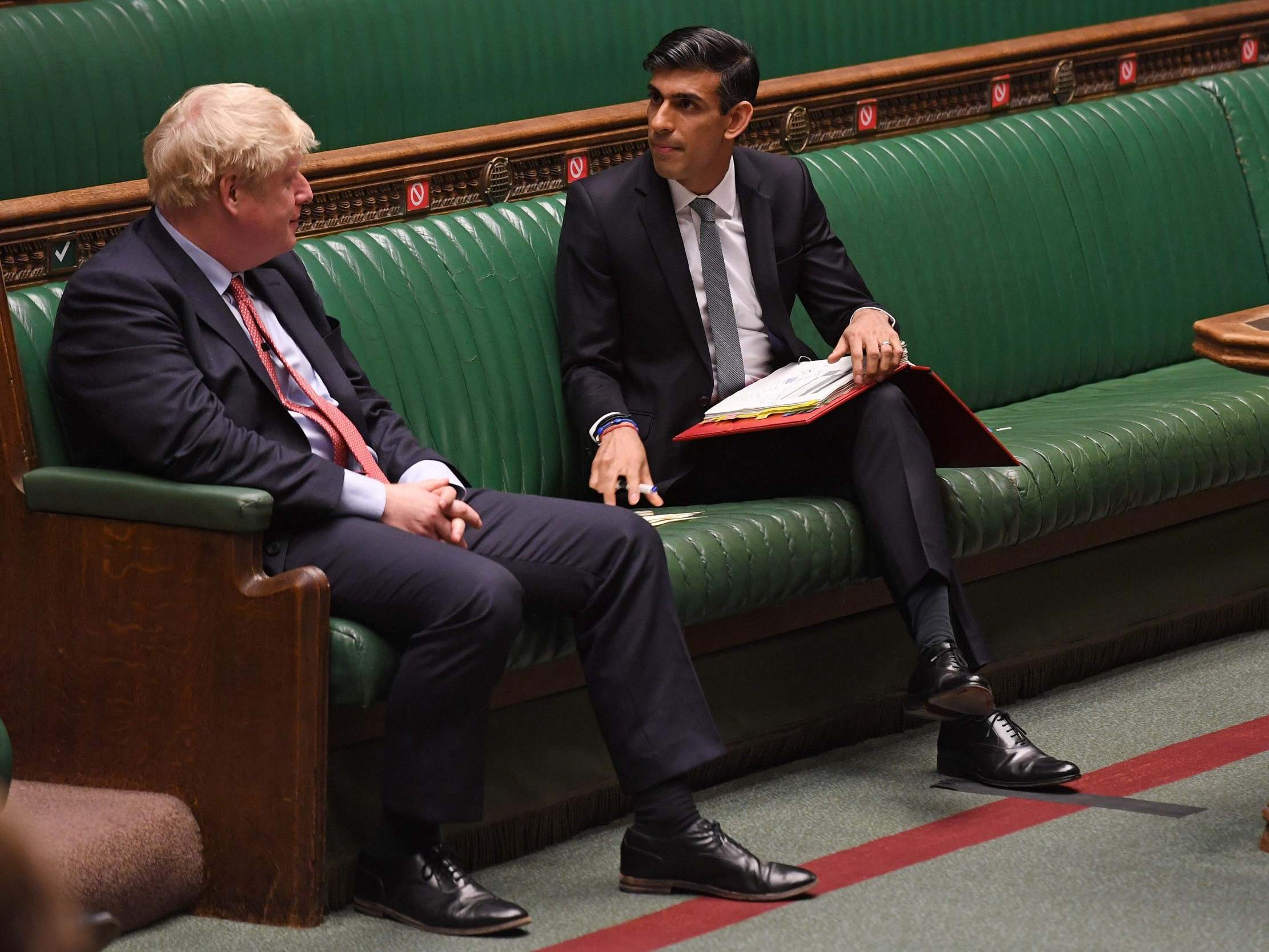The government’s gamble on a V-shaped recovery is looking increasingly questionable
Recent policy decisions such as the full wind down of the furlough scheme by October essentially represented a bet that consumer spending and corporate investment would come back strongly, says Ben Chu


When sorrows come they come in battalions. And there was a double whammy of economic bad news for ministers on Tuesday – first from the disappointing GDP figures for May and second from the pessimistic fresh projections from the Office for Budget Responsibility.
The great hope for the economy in recent months has been the “V-shaped” recovery.
We knew that the collapse in activity in March and April had been of historic proportions due to the lockdown and the health crisis. But there were signs from novel data sources such as movement trackers, consumer transactions and some business surveys that the bounce back would be equally impressive.
Unfortunately, the latest “hard” data from the Office for National Statistics for activity in May, when the lockdown began to be eased, is at odds with that impression of a phoenix-like resurrection for the UK economy.
In any normal month a 1.8 per cent expansion in aggregate activity in just four weeks would be a phenomenal performance. But in the wake of April’s 20 per cent drop it’s meagre. Many analysts had been hoping for a 5 per cent jump, with even better to come in June.
It would be premature to give up hope of a powerful bounce back. But it certainly cannot be taken for granted now.
And the official data is a reality check for those who invested too much faith in untested new activity indicators.
Ministers might, similarly, have been hoping that they would get some positive news from the OBR this week, given the lockdown was eased rather sooner than the forecaster assumed when it outlined its April “scenario”.
Many analysts suspected the OBR had overdone it when it projected a jaw-dropping 35 per cent collapse in activity in the second quarter of 2020.
The OBR did cut down that estimate on Tuesday. Yet overall the message from the Treasury’s independent forecaster and watchdog was more pessimistic than three months ago, not less.
The new central scenario it unveiled shows a slower recovery than it previously pencilled in, with more permanent “scarring” of workers and businesses by the crisis.
While the OBR was essentially projecting a full V-shaped resurgence in April, the V now looks very lop-sided, with the level of economic output still 10 per cent lower relative to January at the end of this year.
Indeed, the OBR central projection has the level of GDP still more than 3 per cent lower than the pre-crisis path as far out as 2024.
The only saving grace is that the OBR refrained from cutting its estimate for the underlying trend UK growth rate still further.
Nevertheless, weaker realised GDP growth in the coming years means higher public borrowing and a larger stock of public debt.
The OBR says the deficit this year could breach 20 per cent of GDP if the recovery falters, which would be easily the worst since the Second World War.
But most worrying of all is the OBR’s projection that unemployment is now set to rise to 3.5 million, or around 12 per cent of the workforce, later this year, as the furlough scheme is unwound. That would take joblessness to the highest levels since the 1980s.
The chancellor Rishi Sunak insisted last week that he will never treat mass unemployment as “unavoidable”, but mass unemployment is precisely what his own forecaster is now projecting.
Projections are, of course, only projections. And the OBR stresses that there is huge uncertainty about the path the economy will take. Forecasters famously overestimated the rise in unemployment after the financial crash a decade ago.
Yet the new numbers will undoubtedly be sobering for ministers – and rightly so.
Recent policy decisions – the full wind down of the furlough scheme by October, the relatively modest stimulus measures unveiled last week – essentially represented a bet on a V-shaped recovery in which consumer spending and corporate investment would come back strongly, with the private sector smoothly taking on the baton from the public sector in providing employment and growth.
That gamble now looks less sensible than it did even a few days ago.
Join our commenting forum
Join thought-provoking conversations, follow other Independent readers and see their replies
Comments